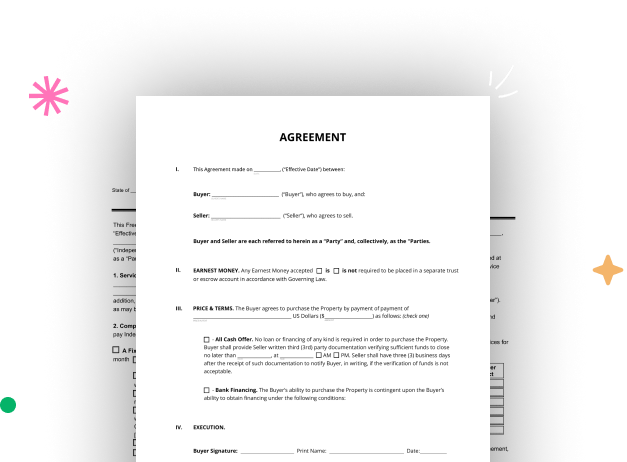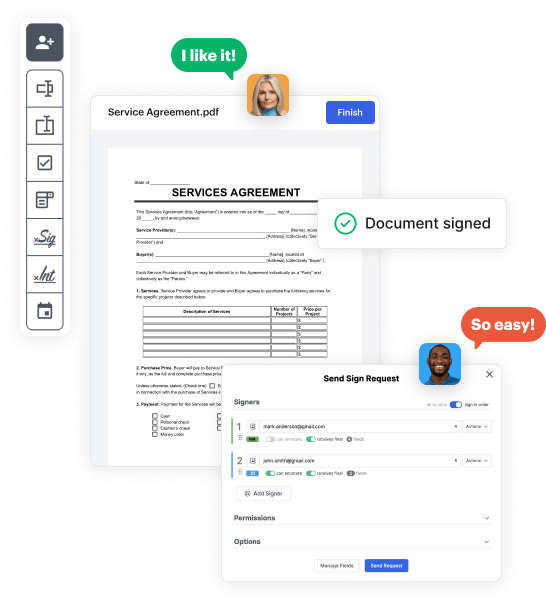

First, sign in to your DocHub account. If you don't have one, you can easily register for free.
Once signed in, head to your dashboard. This is your main hub for all document-focused activities.
In your dashboard, select New Document in the upper left corner. Hit Create Blank Document to design the Landlord and Tenant Lease Agreement from the ground up.
Place various items like text boxes, images, signature fields, and other options to your template and designate these fields to specific recipients as needed.
Personalize your template by inserting guidelines or any other essential information utilizing the text tool.
Carefully check your created Landlord and Tenant Lease Agreement for any inaccuracies or necessary adjustments. Take advantage of DocHub's editing capabilities to perfect your document.
After finalizing, save your work. You may select to save it within DocHub, export it to various storage services, or send it via a link or email.